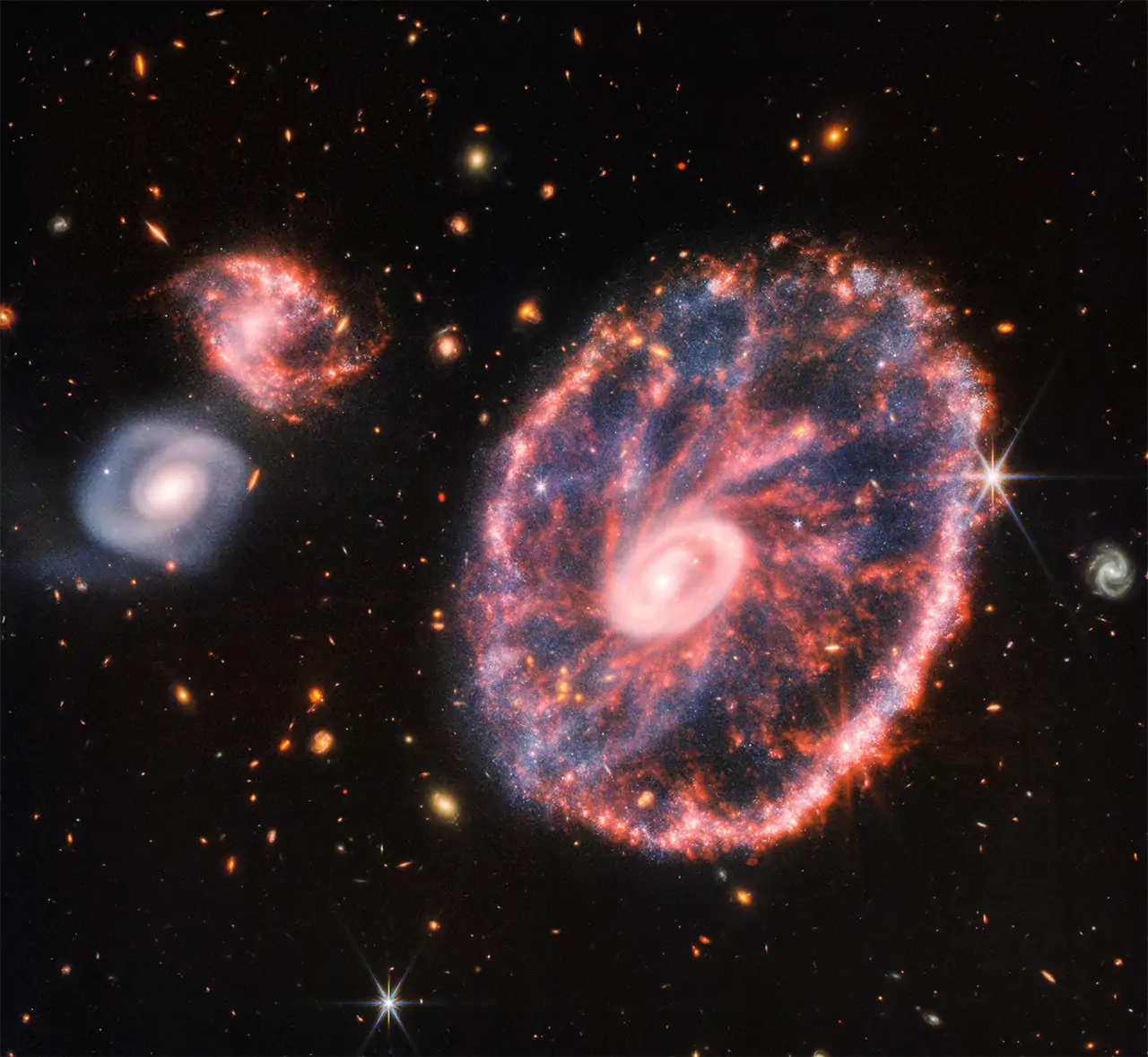Ever since the James Webb Space Telescope (JWST), the space telescope designed primarily to conduct infrared astronomy, was put into space, the world is expecting to see more and clearer photos of stars and galaxies.
JWST as the largest optical telescope in space, is able to create that expectation because it greatly improved infrared resolution and sensitivity. This allows it to view objects too early, distant, or faint for the Hubble Space Telescope.
This is also the reason why people would trust anything from those who work in the project.
And that includes the words from Étienne Klein, a celebrated physicist and director at France's Alternative Energies and Atomic Energy Commission.
In a tweet, he posted what he claimed to be a 'space telescope image' of a distant star in its full glory and detail.
Photo de Proxima du Centaure, l’étoile la plus proche du Soleil, située à 4,2 année-lumière de nous.
Elle a été prise par le JWST.
Ce niveau de détails… Un nouveau monde se dévoile jour après jour. pic.twitter.com/88UBbHDQ7Z— Etienne KLEIN (@EtienneKlein) July 31, 2022
He said to his more than 91,000 followers, that it's a photo of Proxima Centauri, the closest star to the Sun, which is located around 4.2 light years from Earth.
Since the post came out from a top scientist, the post was quickly retweeted and commented by thousands and thousands of Twitter users, who apparently took Klein by his words.
But what the red circle really is, is a slice of pork sausage popular in Europe.
Klein only admitted this prank a while later, in a series of follow-up tweets, saying that the image is in fact, a close-up photo of a slice of chorizo taken against a black background.
"In view of certain comments, I feel obliged to specify that this tweet showing an alleged picture of Proxima Centauri was a joke. Let's learn to be wary of the arguments from positions of authority as much as the spontaneous eloquence of certain images," the scientist said.
Sooner than later, he faced backlash from almost everyone who trusted his words.
Klein apologized for the prank.
Je viens présenter mes excuses à ceux que mon canular, qui n’avait rien d’original, a pu choquer. Il voulait simplement inciter à la prudence vis-à-vis des images qui semblent éloquentes par elles-mêmes.
La blague d'un scientifique https://t.co/wHiJWxscxq #Astronomie via @LePoint— Etienne KLEIN (@EtienneKlein) August 3, 2022
He said that his only intention for posting it was "to urge caution regarding images that seem to speak for themselves."
In a bid to make amends, he posted an image of the spectacular Cartwheel galaxy, a galaxy slightly smaller than the Andromeda Galaxy, located some 500 million light-years away from Earth.
In the photo, the largest is the Cartwheel Galaxy, is pictured with its companions.
He assured his followers that this time, the photo was genuine, and was really taken by the JWST.
The photo was taken using JWST's Near-Infrared Camera (NIRCam) and Mid-Infrared Instrument (MIRI).
This approach reveals details that are difficult to see in the individual images alone.

The James Webb Space Telescope is the most powerful telescope ever launched into space to date.
The project is led by U.S. National Aeronautics and Space Administration (NASA), in collaboration with the European Space Agency (ESA) and the Canadian Space Agency (CSA). The JSWT is managed by the NASA Goddard Space Flight Center (GSFC), while the Space Telescope Science Institute in Baltimore on the Homewood Campus of Johns Hopkins University operates it.
Prime contractor for the project was Northrop Grumman.
The telescope that is named after James E. Webb, who was the administrator of NASA from 1961 to 1968, was launched on 25 December 2021, on an Ariane 5 rocket from Kourou, French Guiana.
It officially began scientific operations on July 12, 2022.
As the successor of the Hubble Space Telescope, the technology inside it is able to peer inside the atmospheres of exoplanets and observe some of the first galaxies created after the universe began, by seeing them through infrared light, which is invisible to the human eye.
While the JWST has half the mass of the Hubble Space Telescope, it has a 6.5-meter gold-coated beryllium primary mirror made up of 18 separate hexagonal mirrors. With a polished area of 26.3 m2, its total collecting area of 25.4 m2 is over six times larger than the collecting area of Hubble's 2.4-meter diameter mirror, which has a collecting area of only 4.0 m2.
This makes JWST's mirror to be the largest ever put into space.
